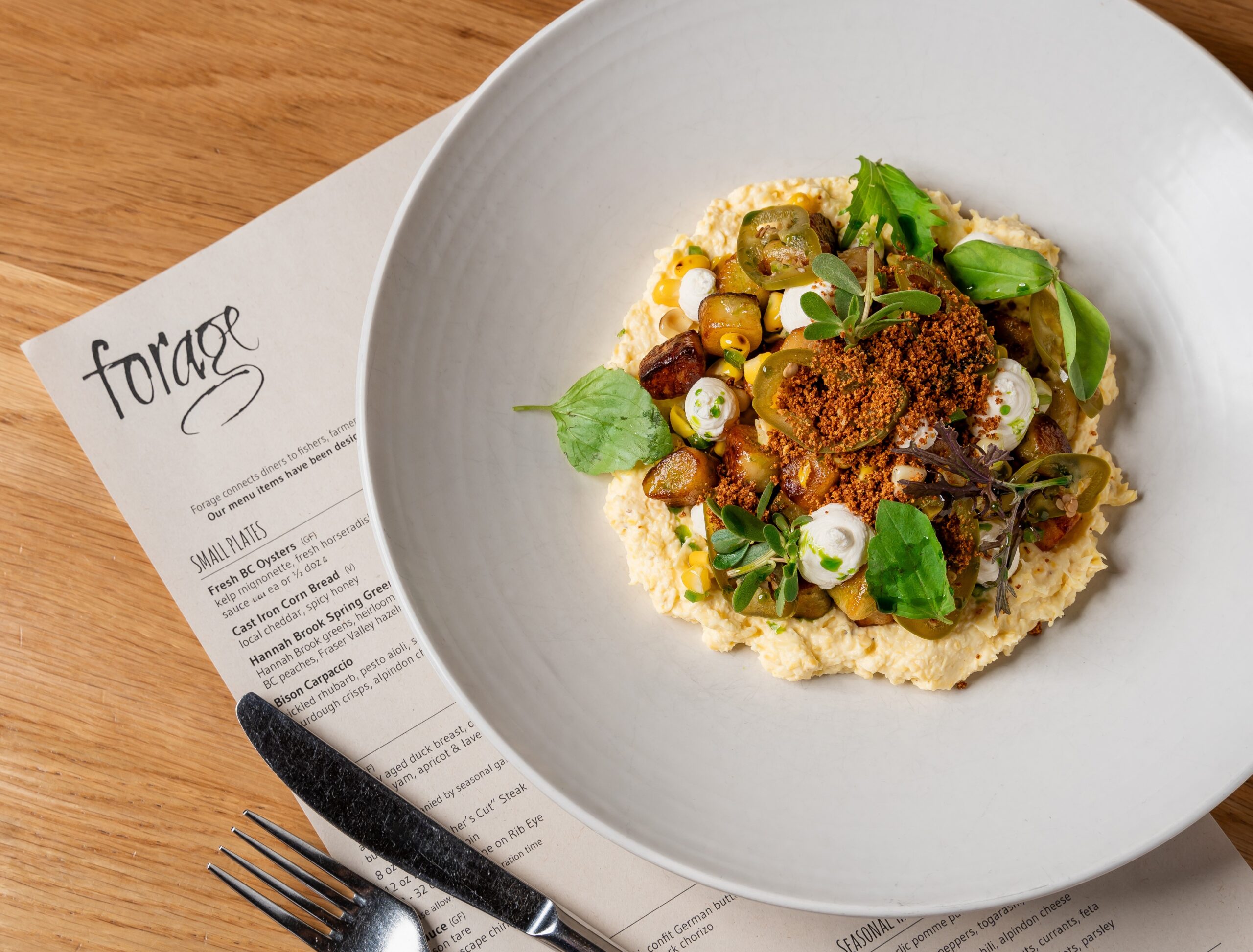As we enter another bleak November it’s hard to imagine anything might be in season during such inhospitable cold. But according to the chefs of some of Vancouver’s best farm-to-table restaurants there is plenty of produce to celebrate and even some abundant seafood. Restaurants across the city make a point of celebrating seasonality, it’s more environmentally friendly and it’s no secret that food tastes better when it’s fresh but only the ones that also commit to locally grown or produced ingredients can call themselves farm to table. These six restaurants, almost all of which are vegetarian-friendly if not forward, are masters of adapting to the seasons and making fresh produce fabulous. Here’s how they adapt to winter. —Alexandra Turner
Diners can expect to find apples, beets, brussel sprouts, cabbages, carrots, kale, leeks, onions, and root vegetables on the menu at Michelin star-winning Burdock & Co. this time of year. Potatoes, yams, winter squash and turnips bulk out the majority of a farm to table menu with plenty of hearty greens and cultivated/wild mushrooms. “Citrus and kiwi and exciting winter fruits that are being grown in B.C. now,” says chef Andrea Carlson. Kiwis can be bought at farmers markets in the winter and root crops come from Hazelmere and North Arm Farm in Pemberton. “Mushroom season is happening right now as well and it’s a bounty year so load up on all the wild mushrooms.”According to Carlson, deep winter means roots so she creates a menu around that product. “We have also preserved other roots like ginger from farms this summer that we can use on the upcoming menu.” Carlson doesn’t find winter any more difficult for menu planning, but she does concede that it can be a bit less diverse. “We rely on preserved seeds, berries and fruits to add some diversity to the roots,” she adds.
Forage’s menu changes from week to week, month to month depending on what’s available at local farms, certain items are staples year-round while others are celebrations of hyper-seasonal produce. It makes menu planning more challenging for chef Craig Sung because the variety of local, seasonal ingredients are more limited compared to the other seasons. “This, however, presents an opportunity for us to really push our creativity and explore other ways to showcase our food,” he says. “This means that we are planning far ahead of the winter season by pickling, fermenting, and preserving produce from the spring and summer.” He sources Brussel sprouts, butter potatoes and cabbage from North Arm Farm and beets, squash and apples from Klippers Organics in Cawston. Not to mention Hannah Brook Farms in Burnaby grows stinging nettle, winter salad mix and celery root. “Being a locally focused restaurant, we strive to feature dishes that highlight our seasonal bounty,” he says.
Chef Matthew Villamoran at Fable Kitchen is a massive fan of fennel plus hearty leafy greens like kale, swiss chard and mustard greens, humble root vegetables like rutabaga and white turnips, and fruits like quince, apple and pear, most of which comes from Hannah Brook Farms.“I can’t speak for other chefs, but every season, along with the usual seasonal suspects we try to showcase vegetables that are not always in the spotlight, like rutabaga,” he says. “On our current dinner menu we have a cold rutabaga salad. The rutabaga is first heavily charred, roasted then chilled. It’s served with a caramelized lemon vinaigrette, preserved lemon creme fraiche, fried sage and fresh thyme.”He doesn’t think winter menu planning is any harder with the right team around you. “No food is ever new,” he shares. “We are always trying to find creative methods and new techniques to prepare vegetables for all seasons. When menu development rolls around the team have lots of discussions on what may be new and exciting to any individual.”
Produce isn’t the only thing that experiences seasons. Seafood is seasonal too. Most farmed shellfish is in season during the fall and winter months, explains chef Tommy Shorthouse of Fanny Bay Oyster Co., which considers itself “tide to table.” During winter, farmed shellfish is harvested at night during low tides as the earth is tilted away from the sun.Oysters are usually at their finest and most flavourful October through December because they’ve fattened up on the summer algae and are preparing to go into hibernation during the cold months. “I’m very influenced by coastal regions around the world and adapt versions of those dishes using our west coast seafood and making it the star,” he says. Because of the versatility of the seafood, Shorthouse says the menu’s largest changes are temperature, hot dishes for winter and more chilled ones during the summer.
Restaurateur Shira Blustein has opened two vegetarian restaurants, one of which is Michelin recommended. The Acorn creates vegan and gluten free dishes from all locally sourced ingredients, utilizing every aspect in a zero-waste kitchen. Stems, skins, pits and scraps from the fruits and vegetables are repurposed into dishes such as Allium which features charred leek top oil. There’s also a daily rotating feature which contains fresh farmed and foraged ingredients.This winter, the menu heavily features mushrooms, root vegetables and stone fruit.
The menu at Farmer’s Apprentice is a moving target, which is a large part of its appeal. The restaurant was among one of the first truly farm to table offerings in Vancouver and continues to adapt to the seasonal changes and creative whims of its chef Alden Ong. Checking out the restaurant’s Instagram is a good way to gauge what kinds of ingredients will be featured on the menu at the time of your visit, for instance sprouting cauliflower and quince are in season right now. Locally sourced meat and seafood is also on the menu, ordering the family style menu promises seven courses of dishes such as dry aged yellowtail kingfish with saffron velouté or fish sauce caramel duck leg with five spice duck and pork sausage accompanied by taro puff, umeboshi plum sauce, water chestnut and daikon.

Be the first to comment